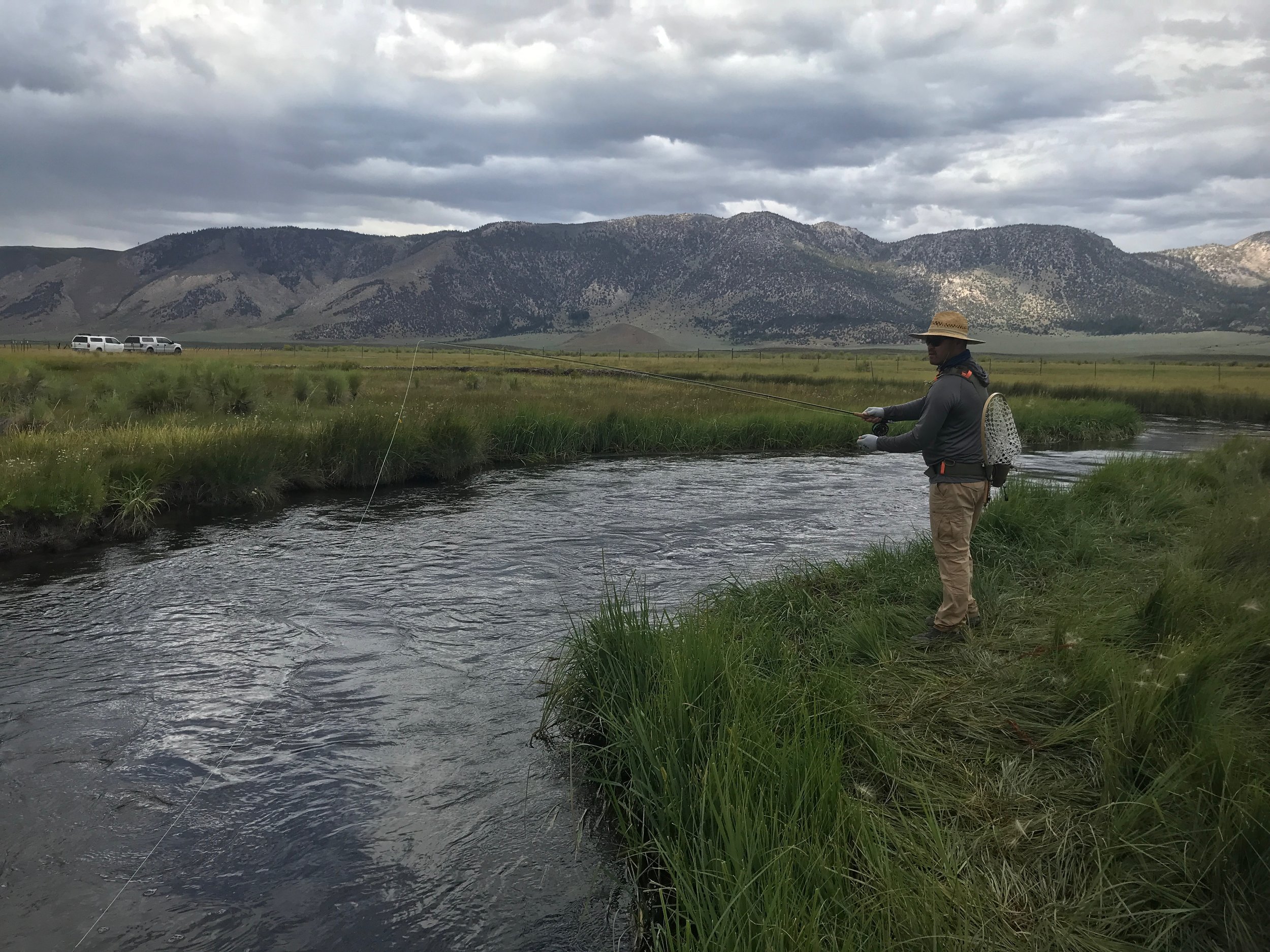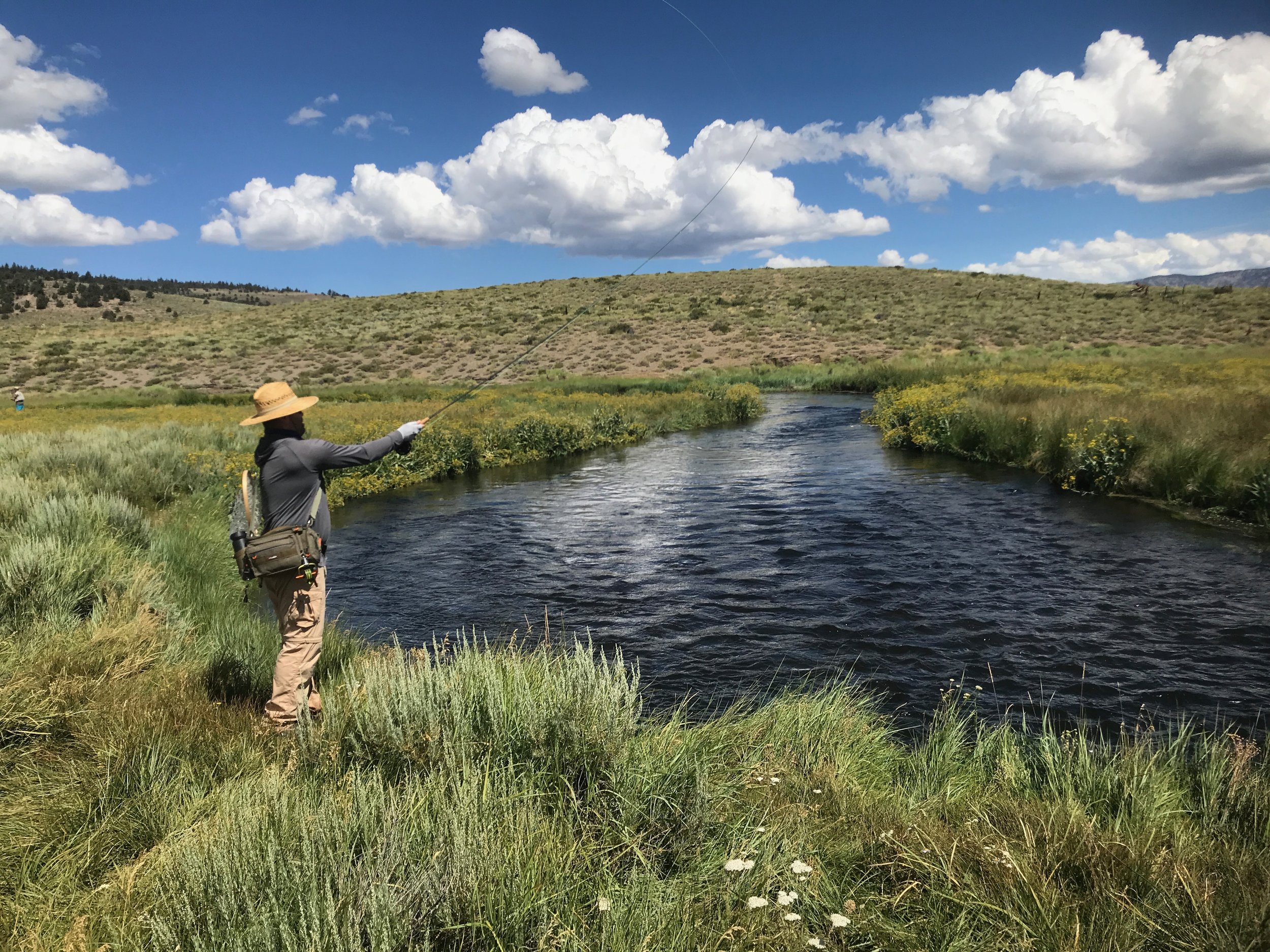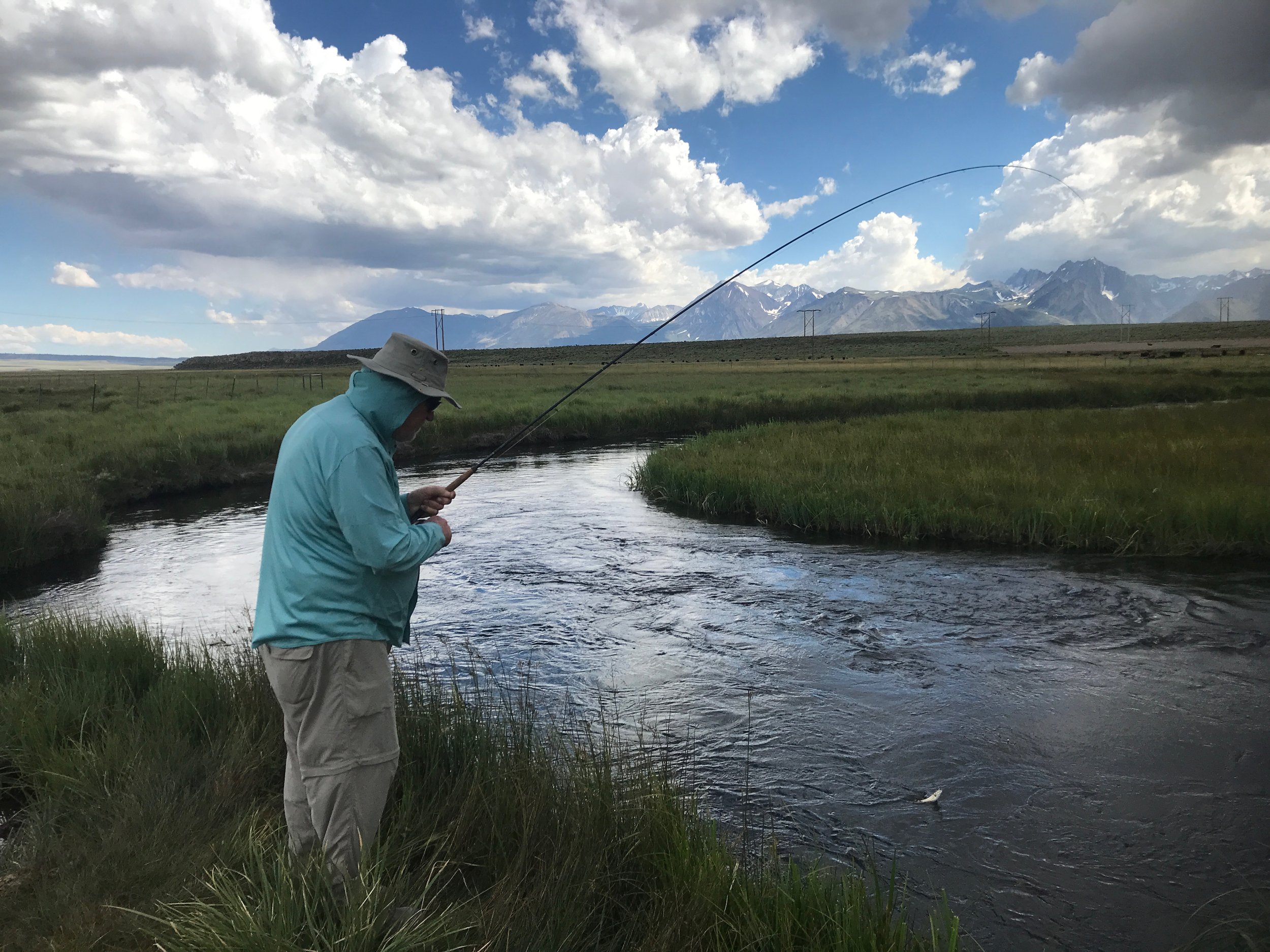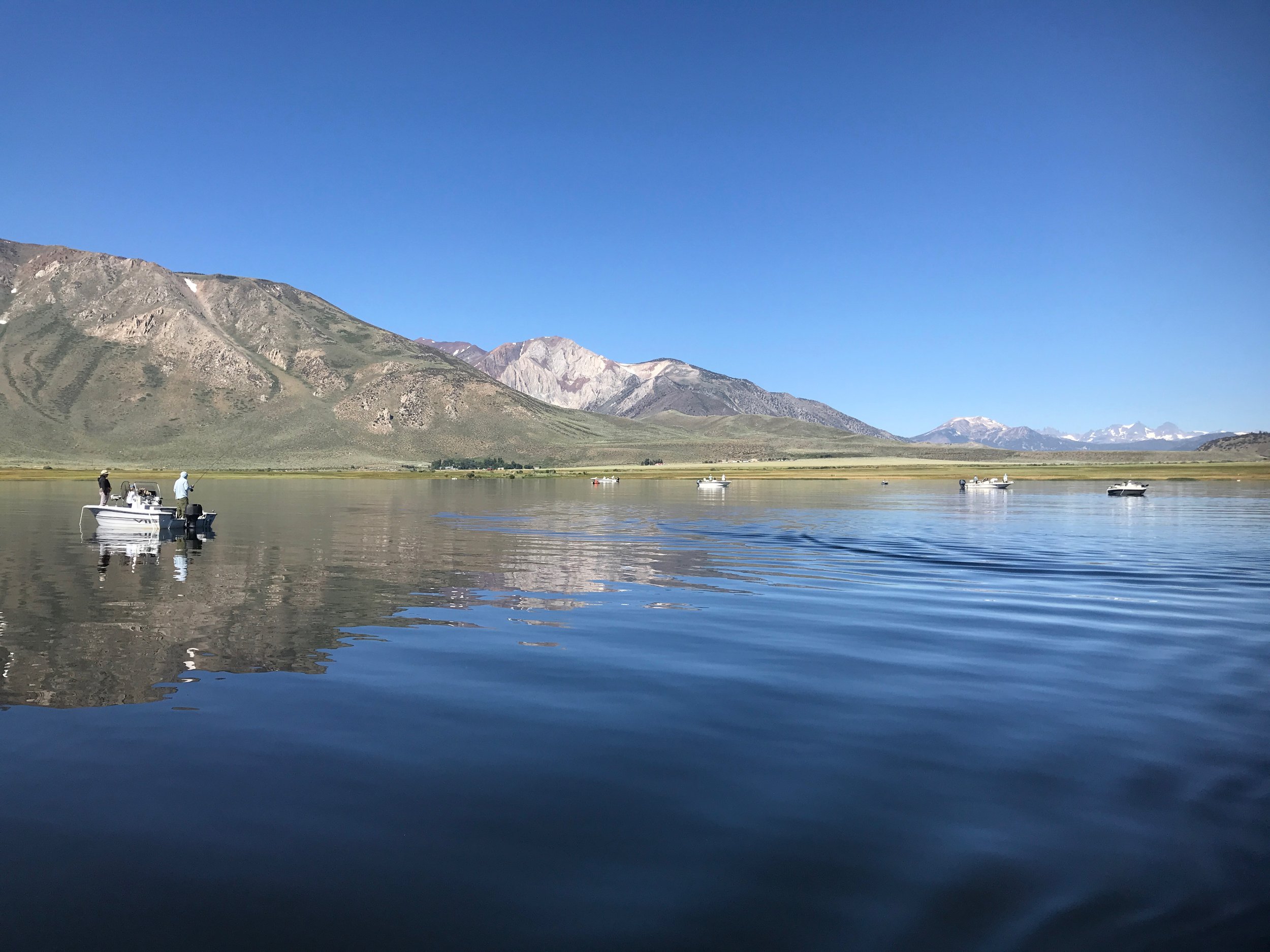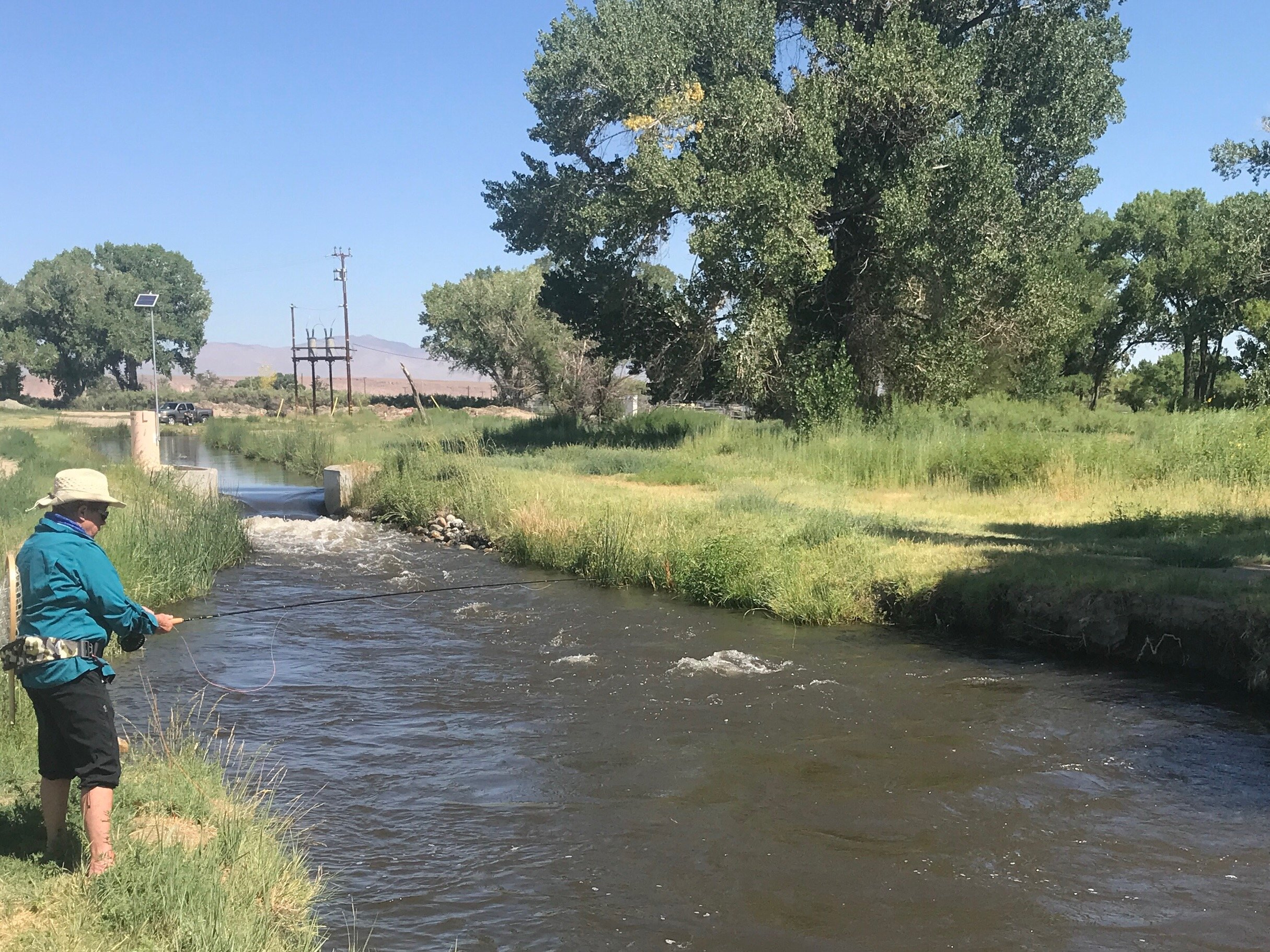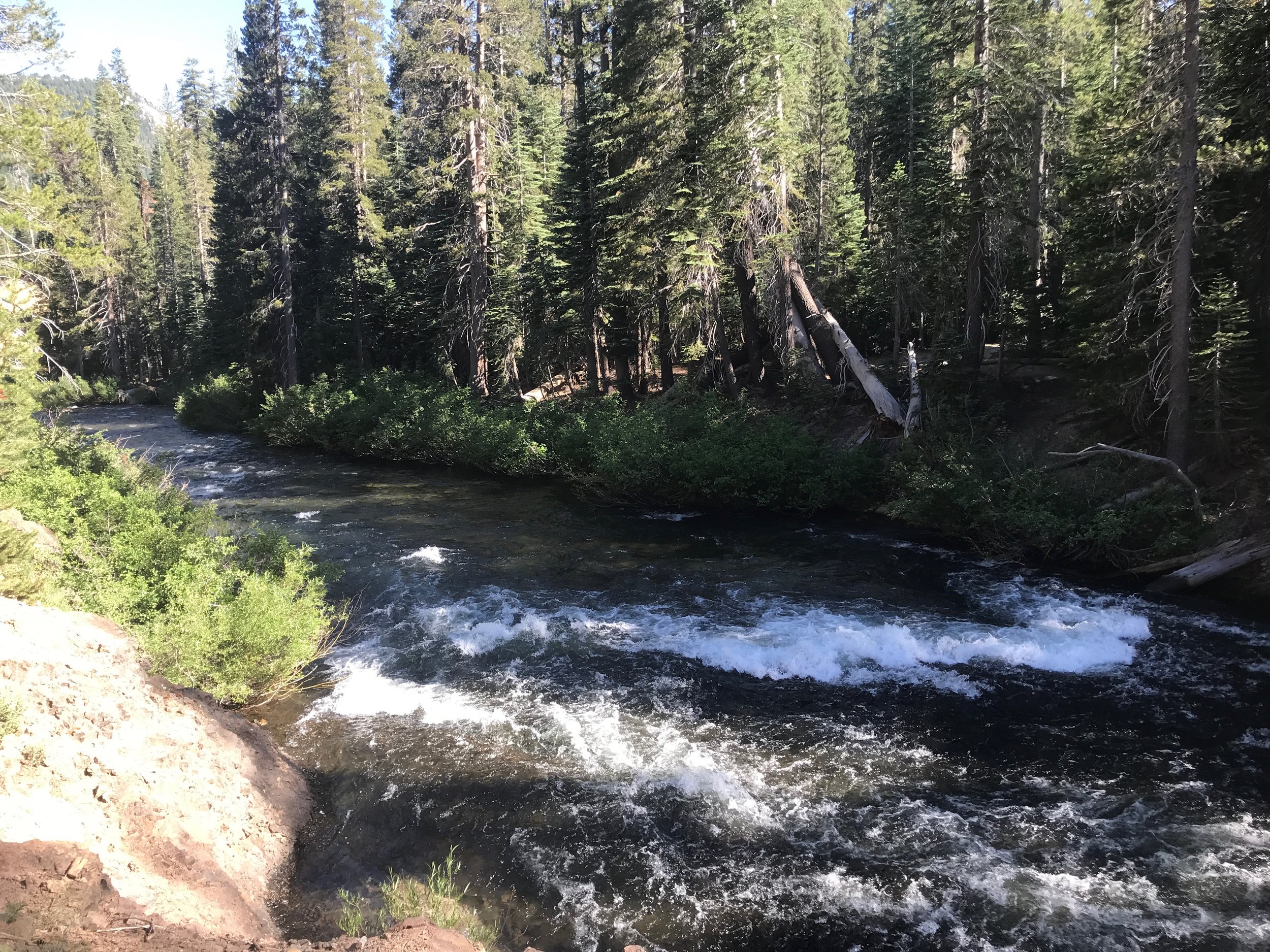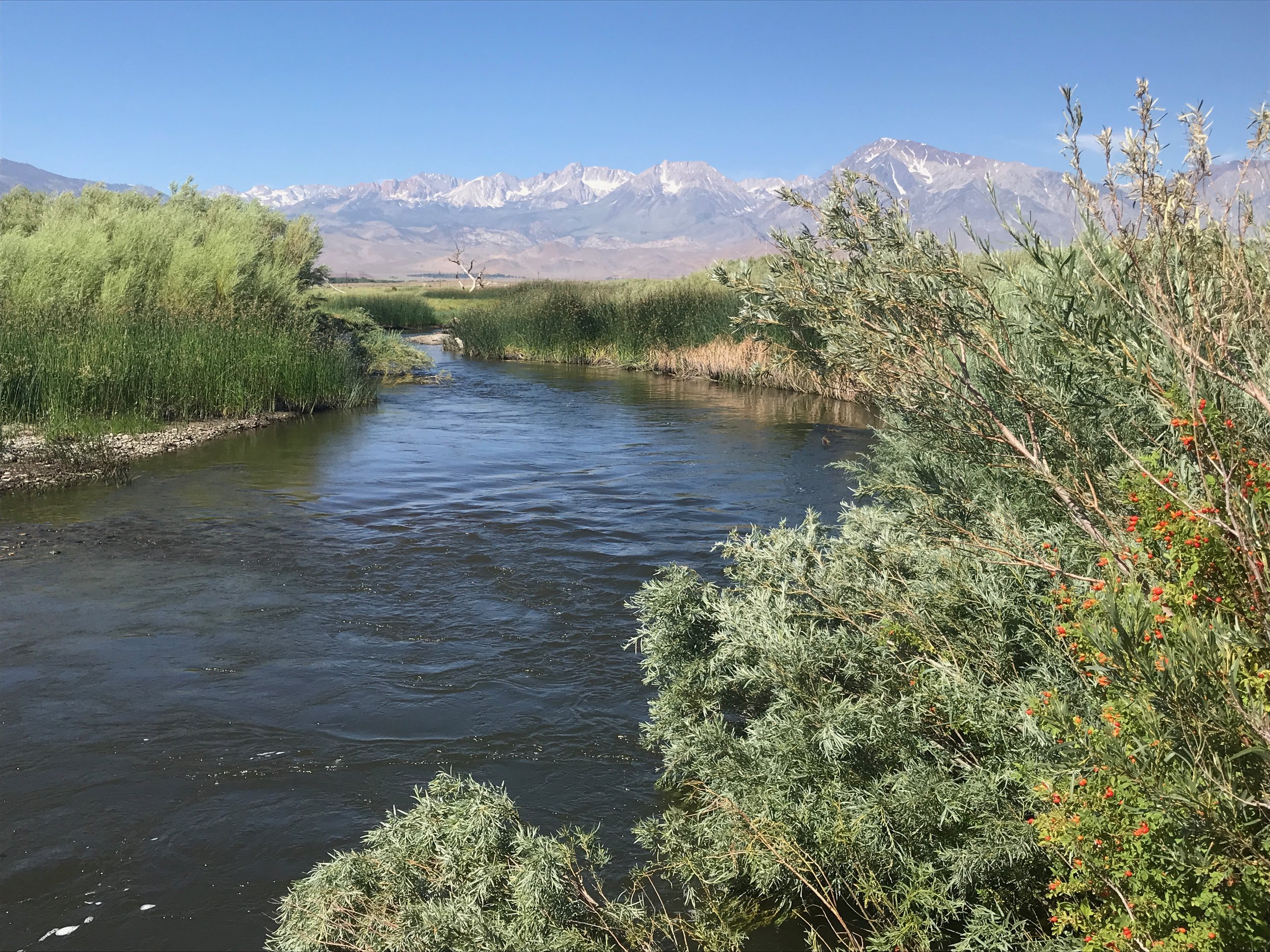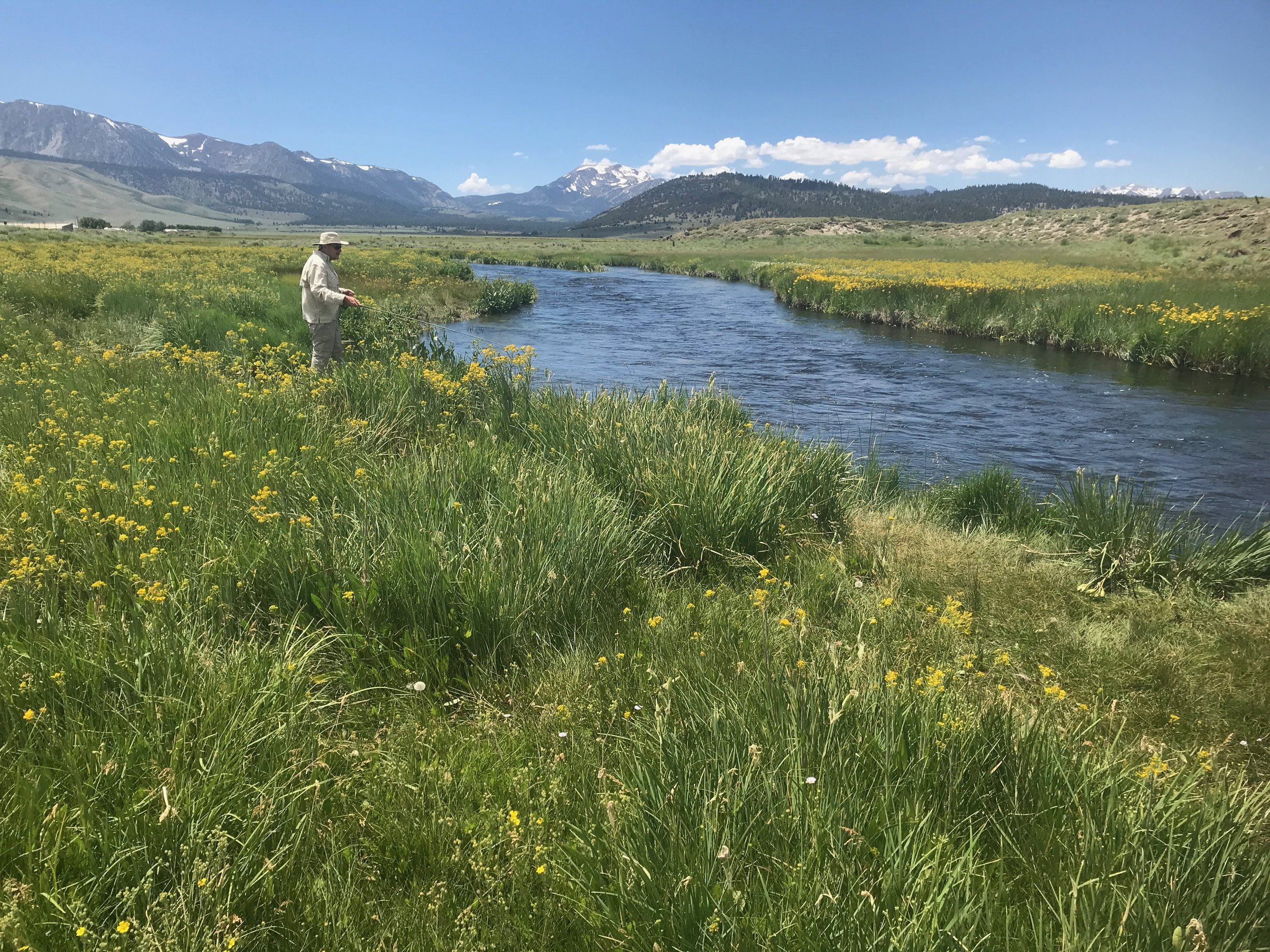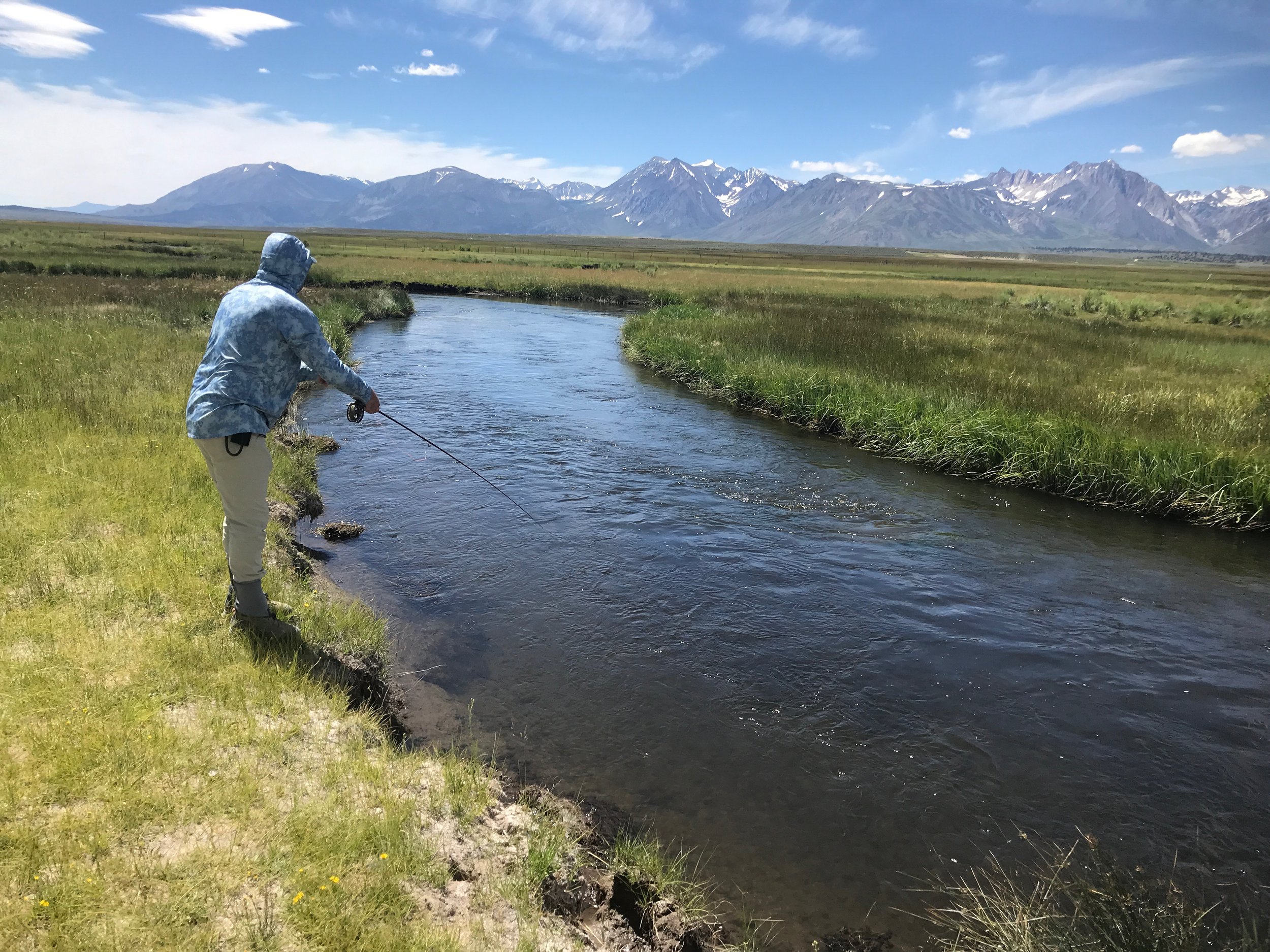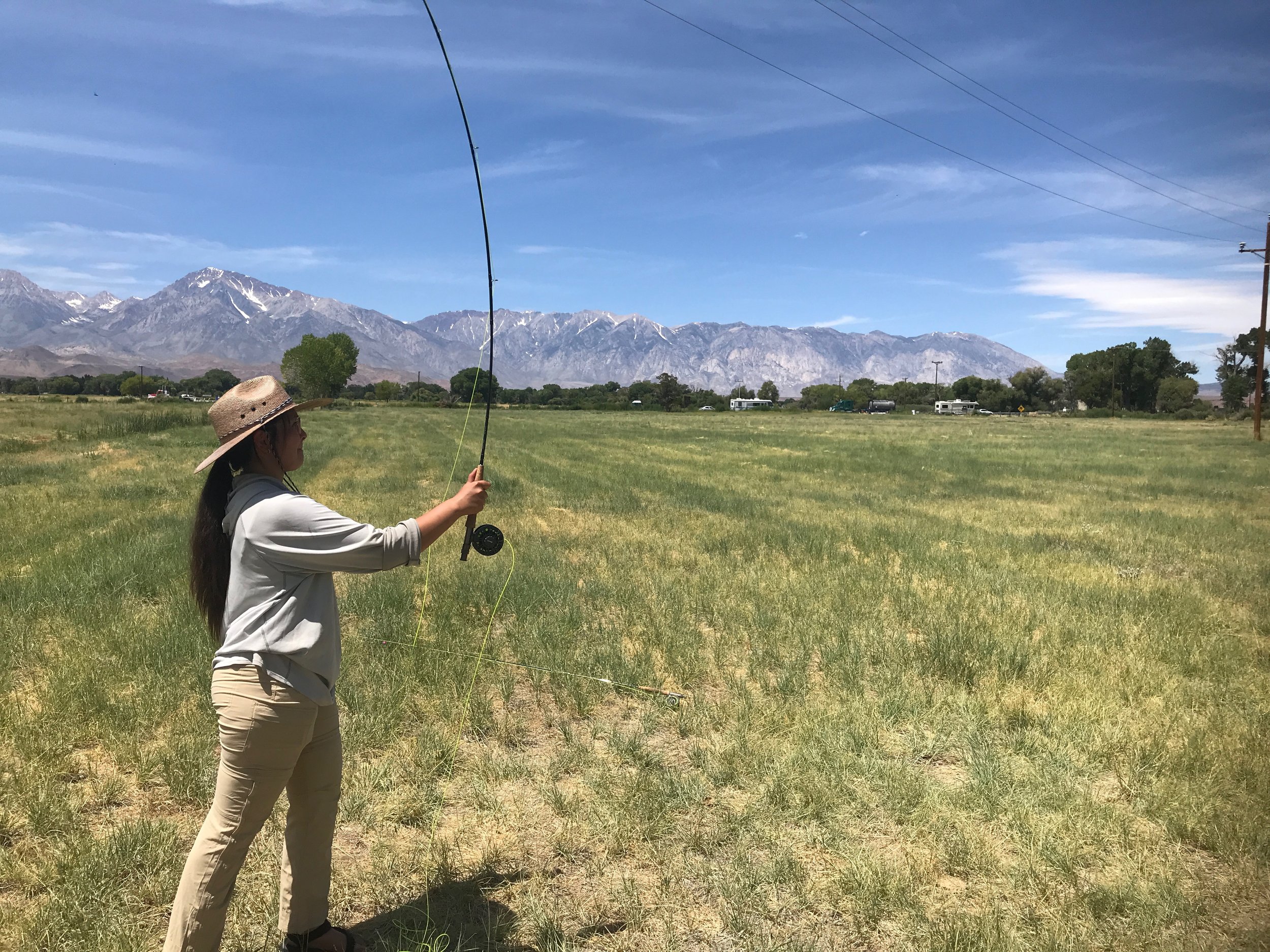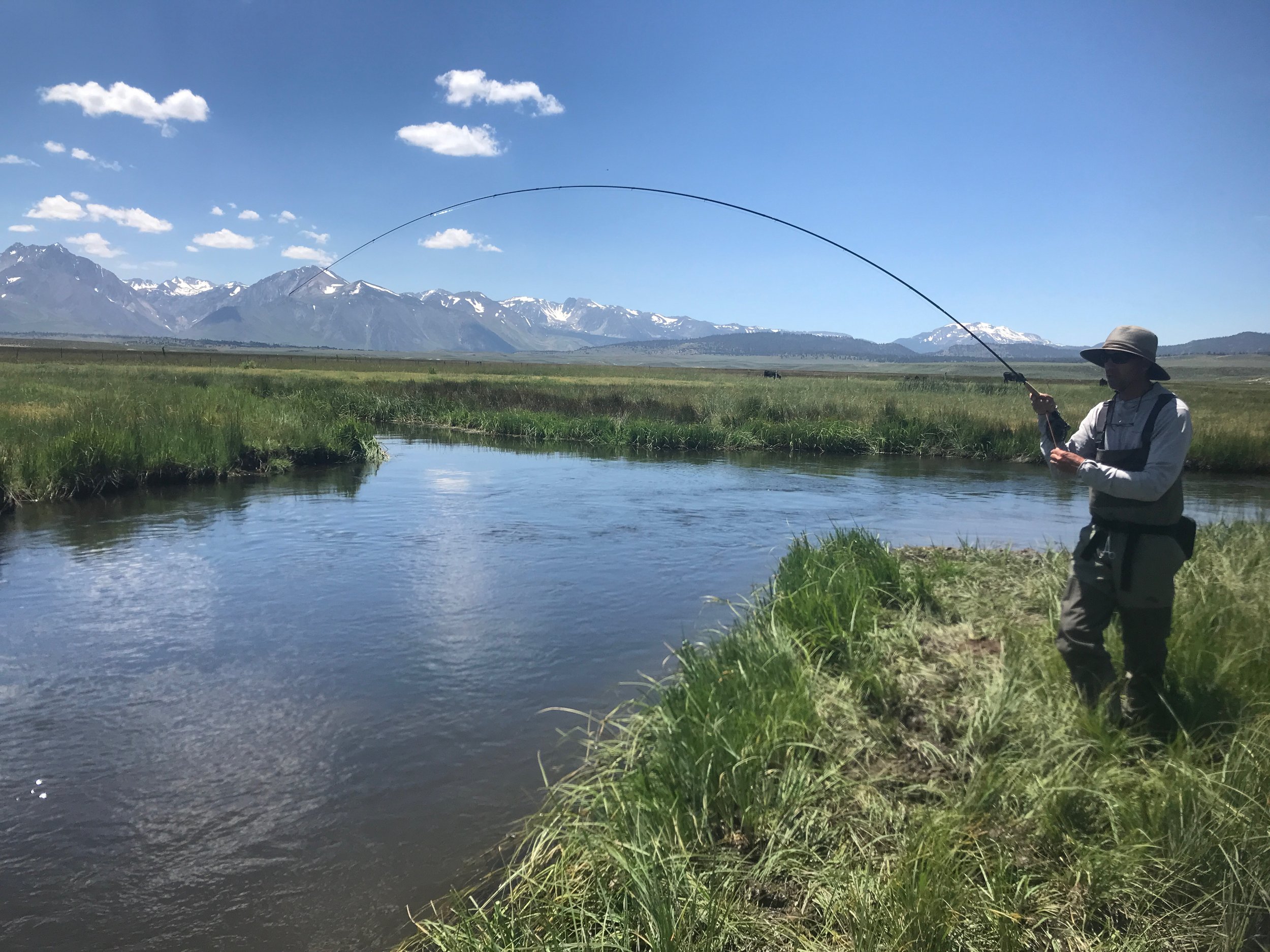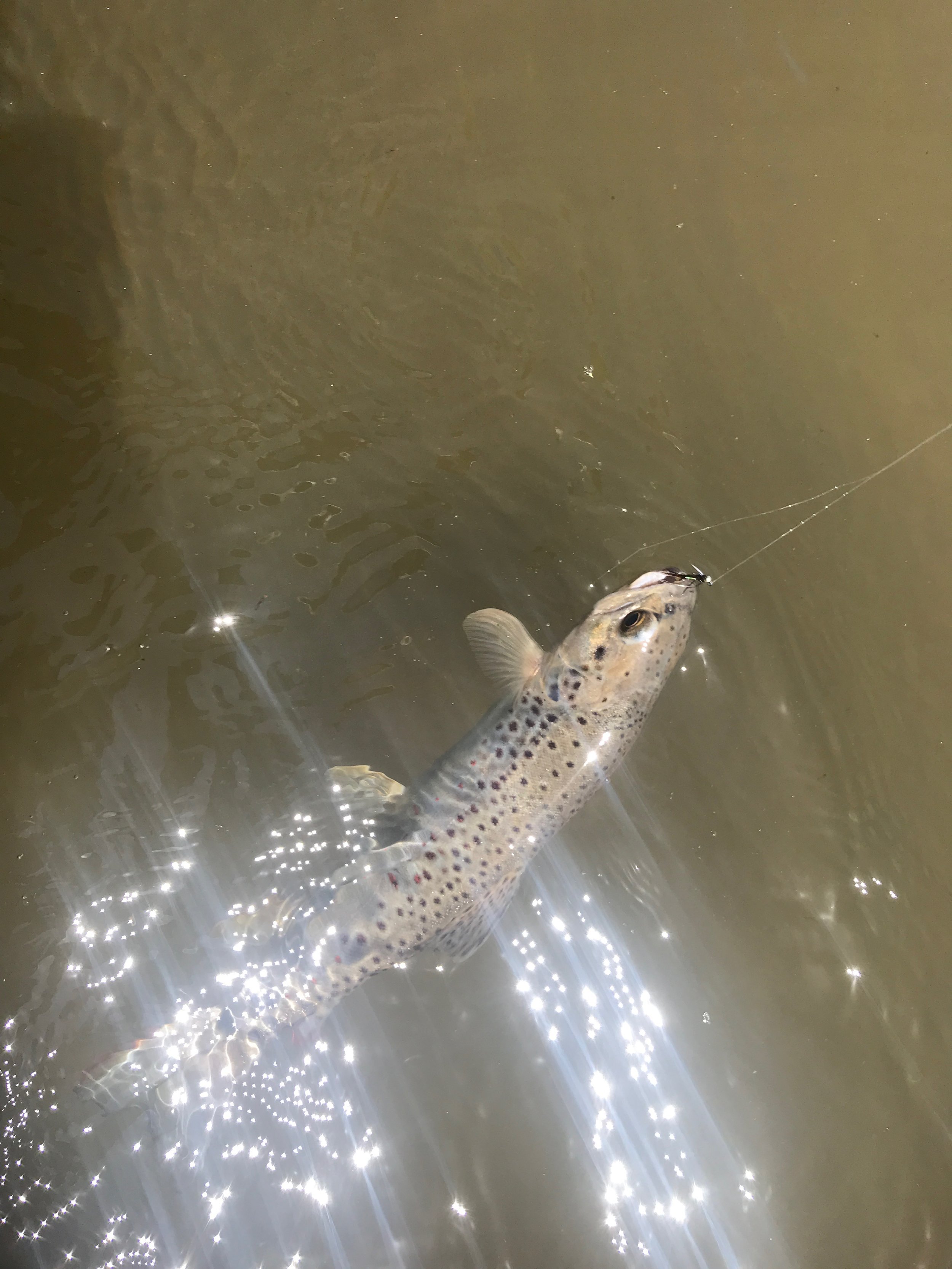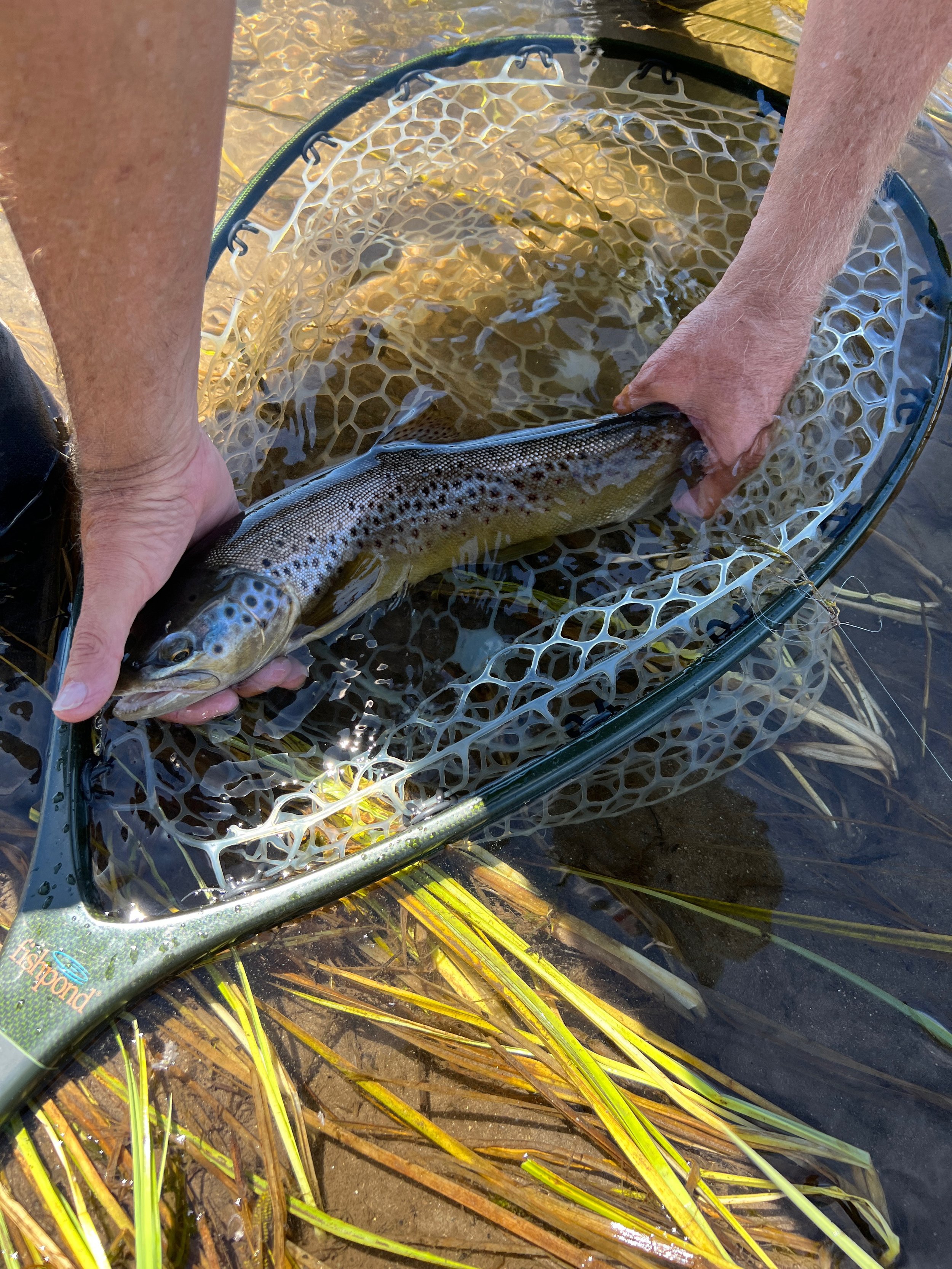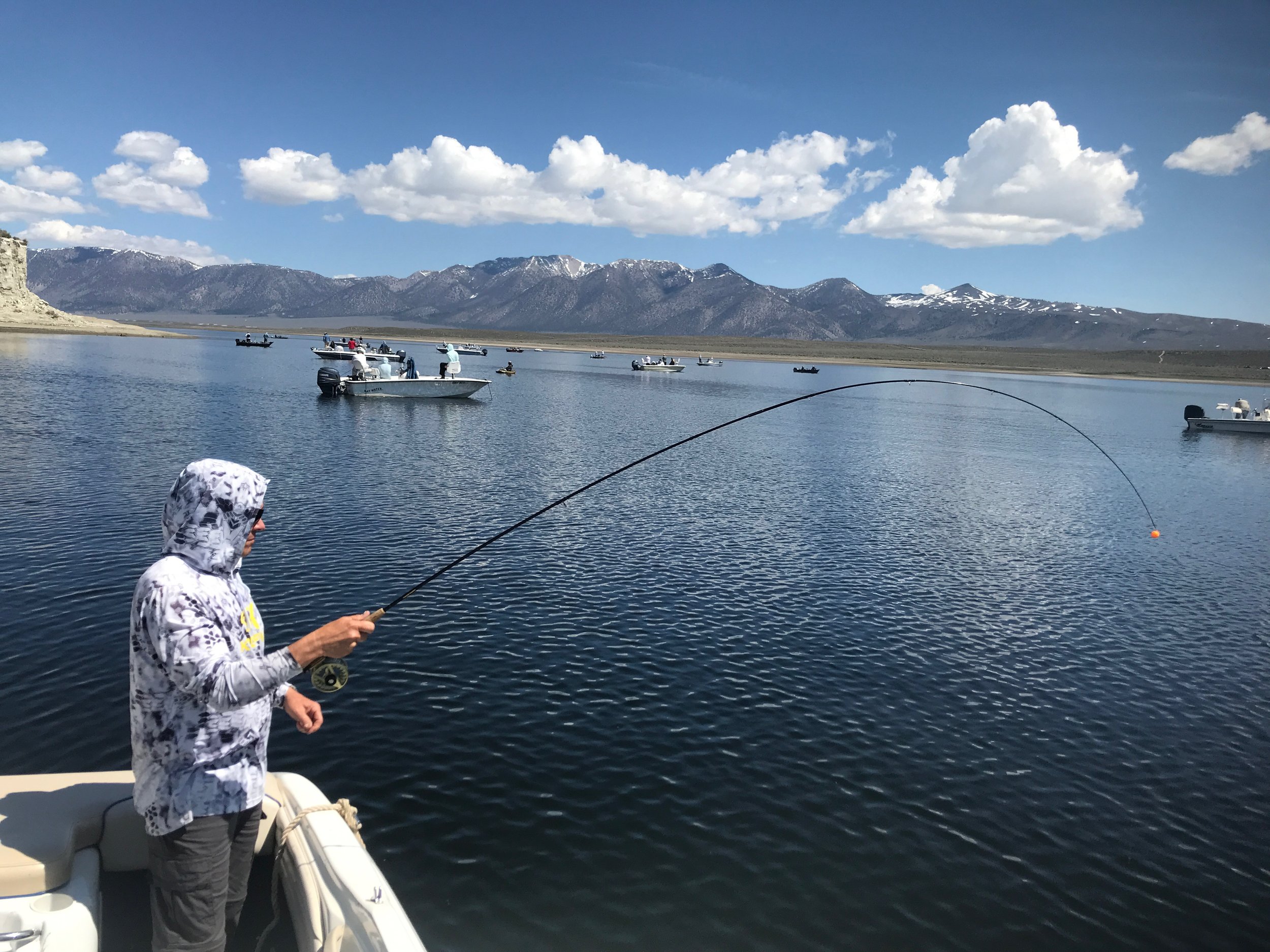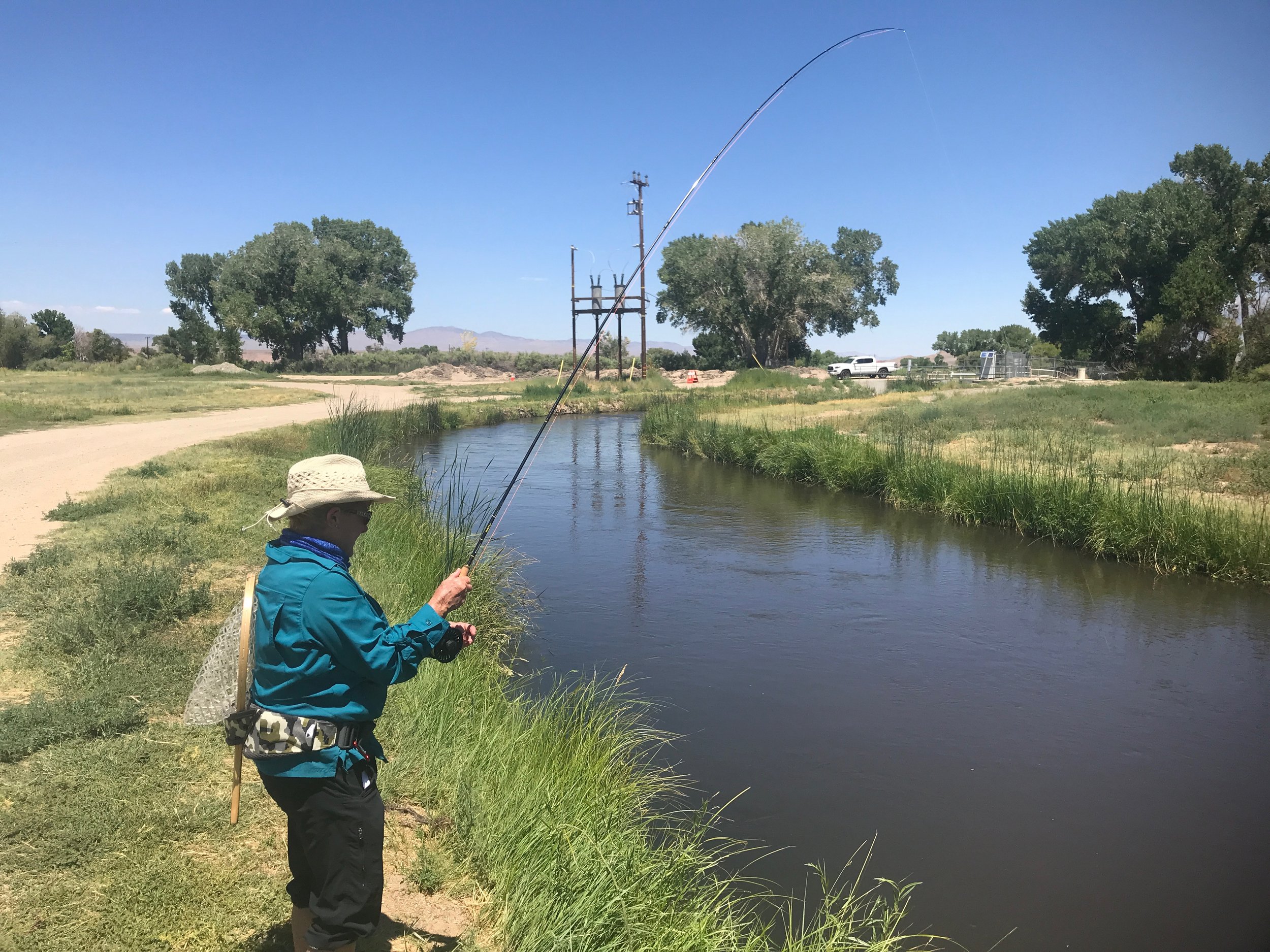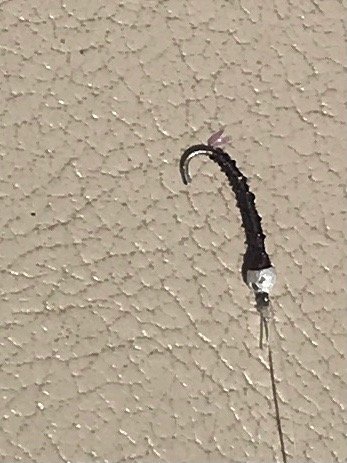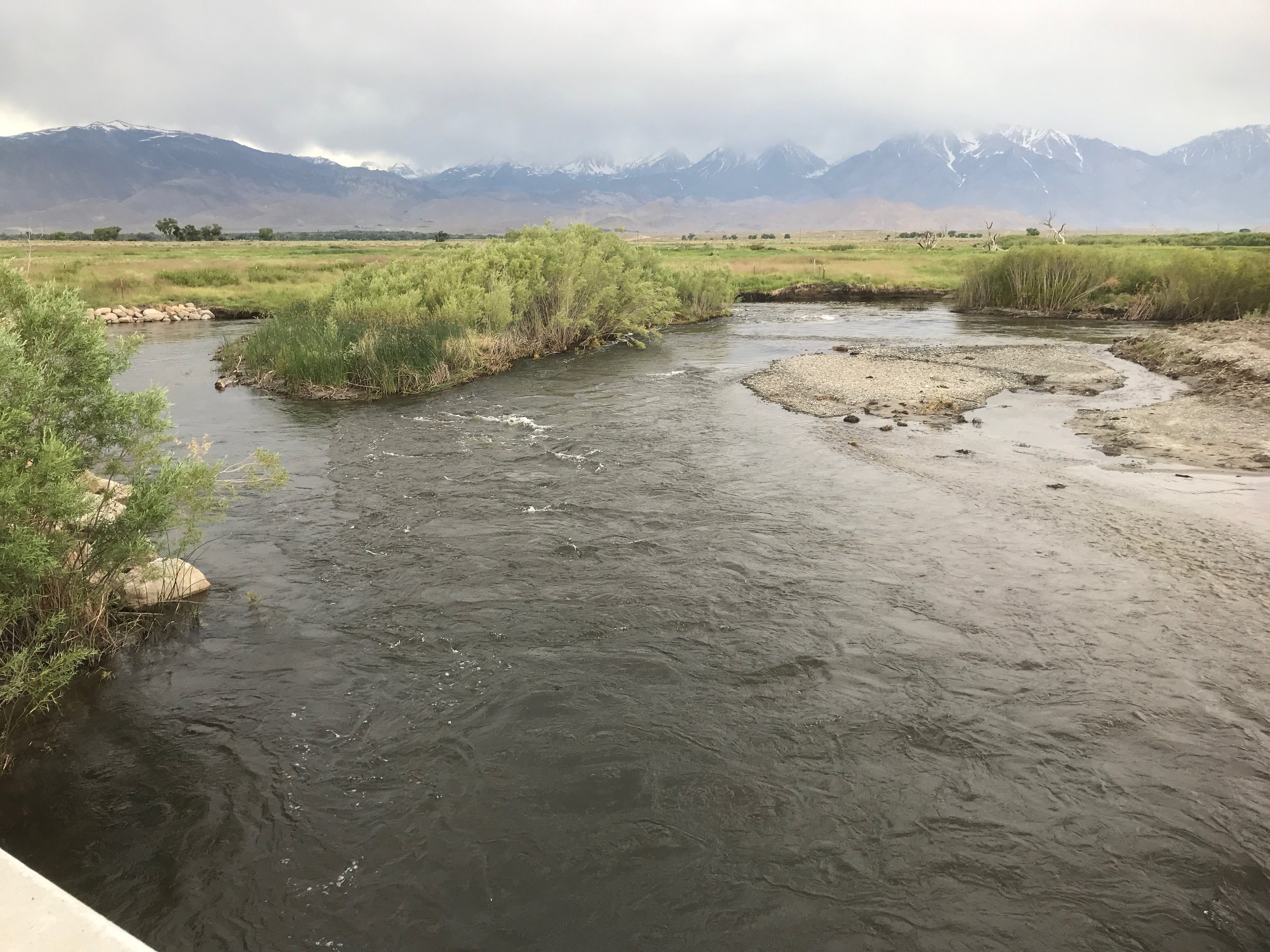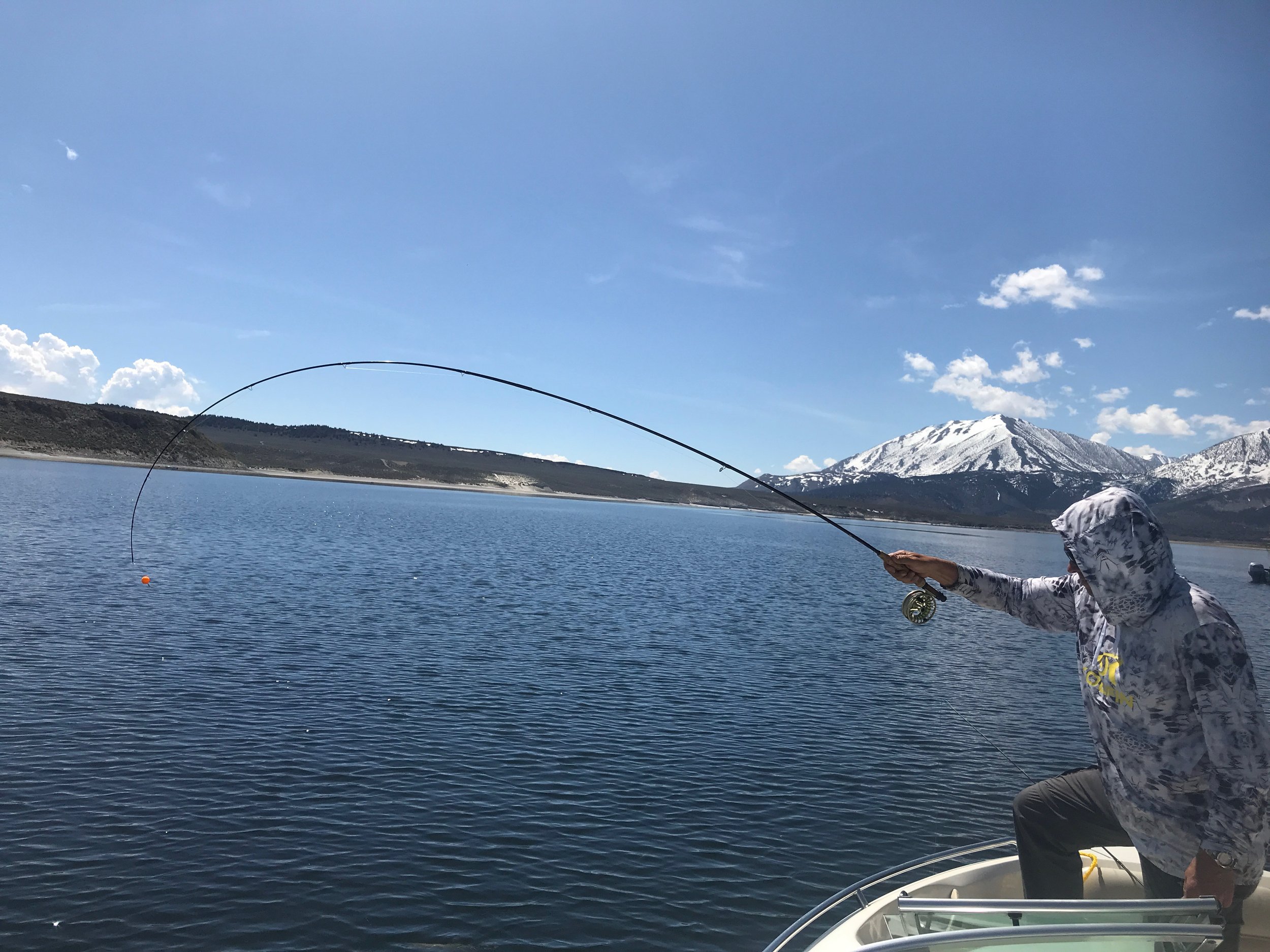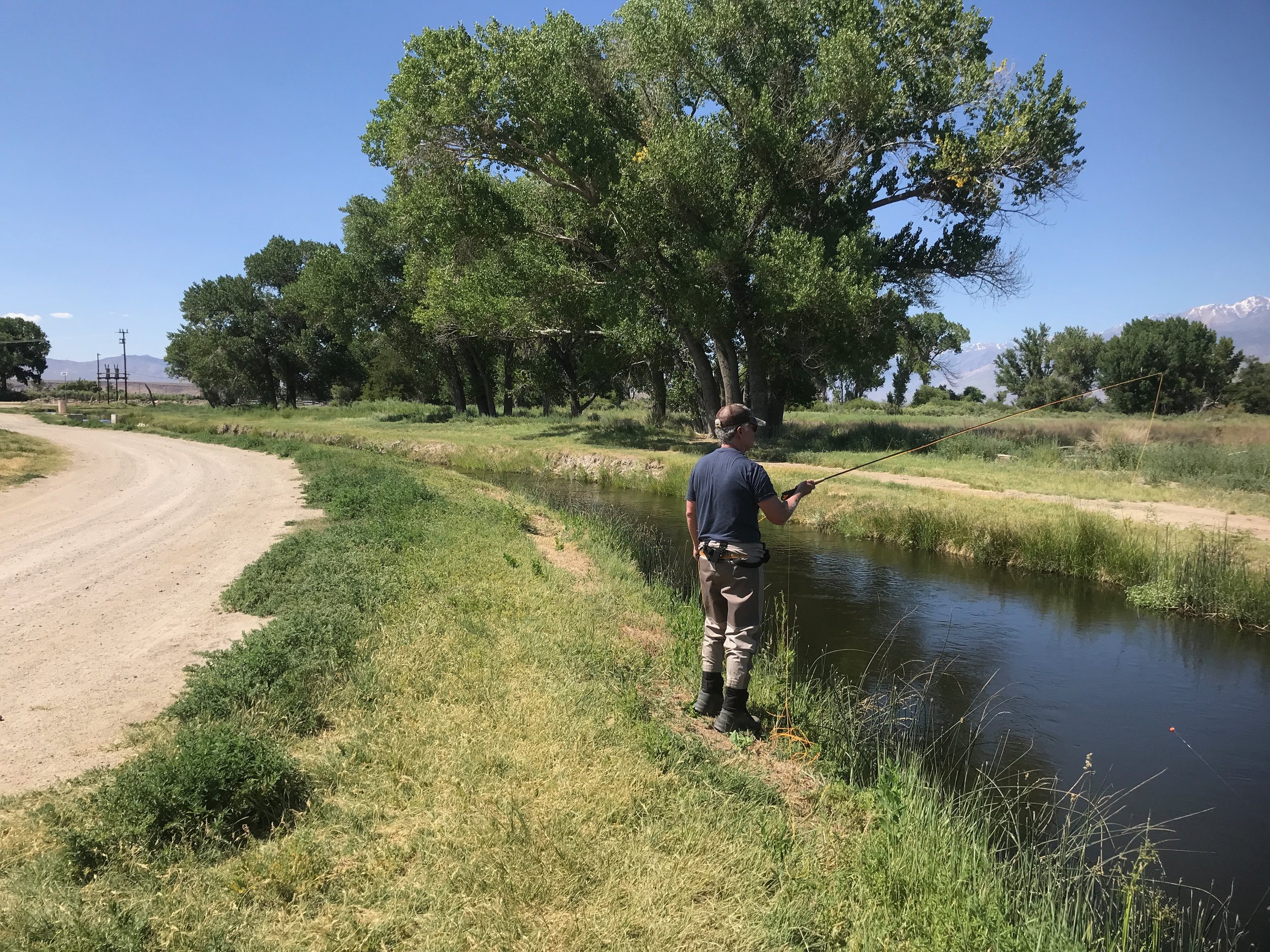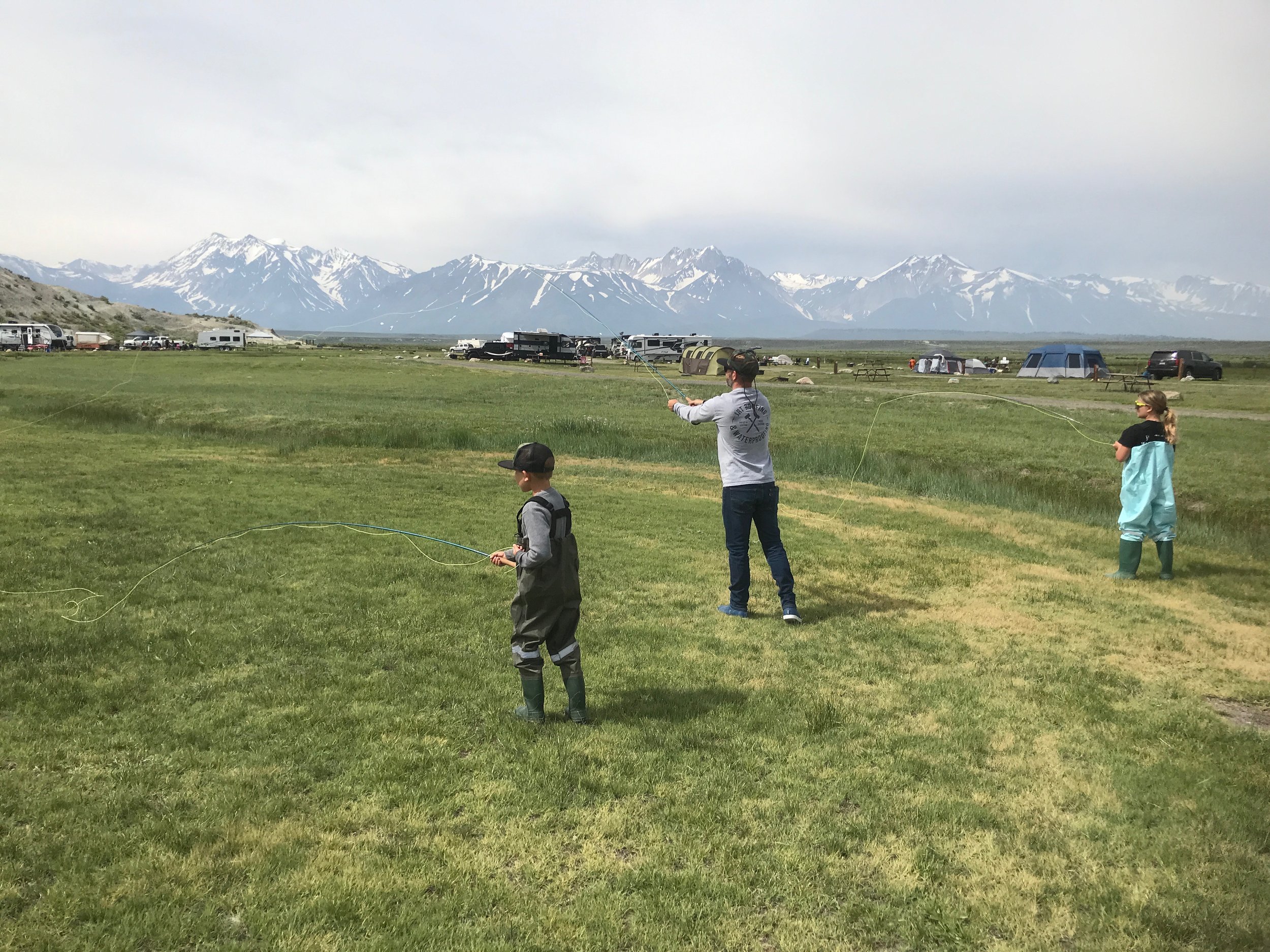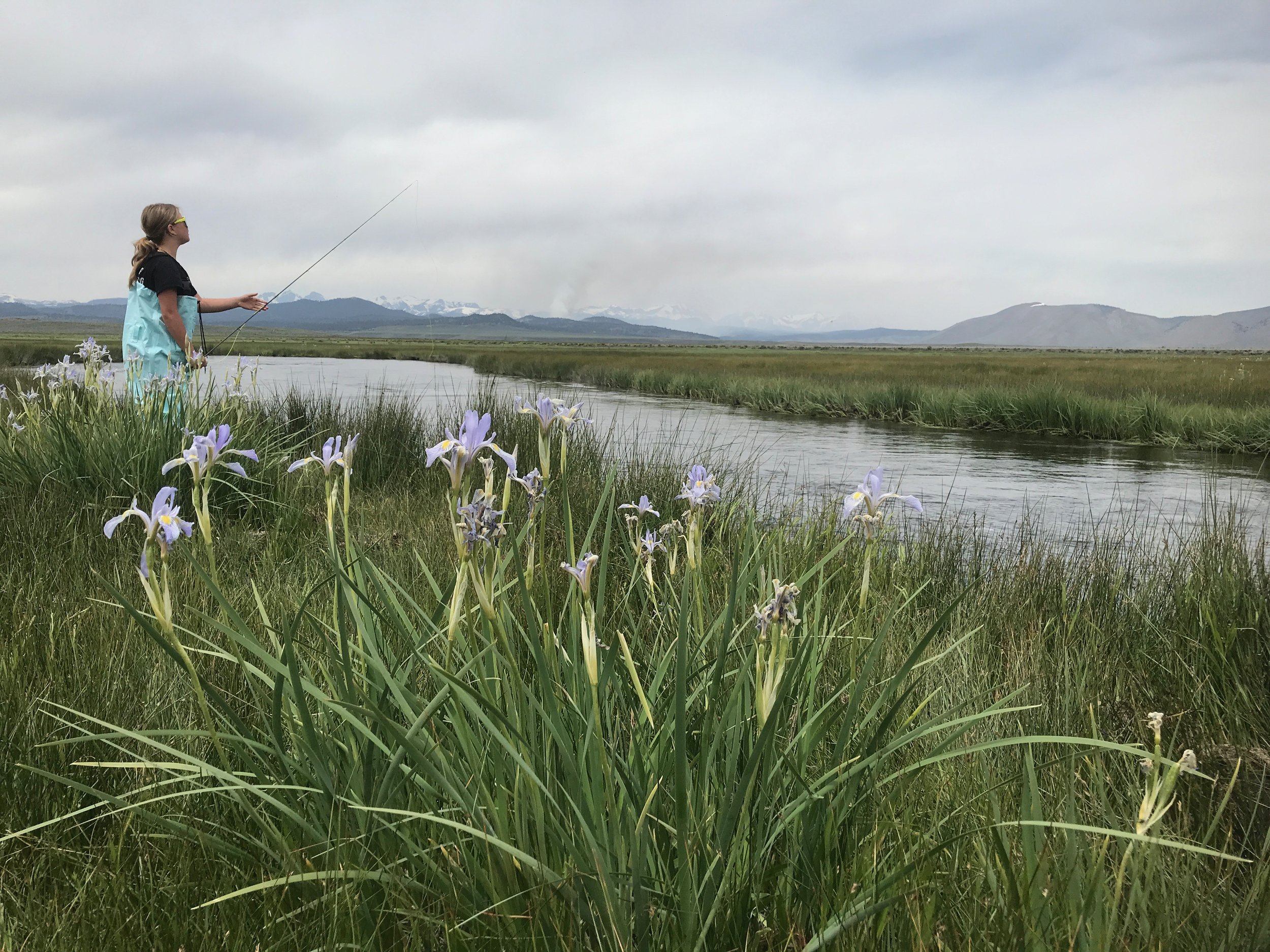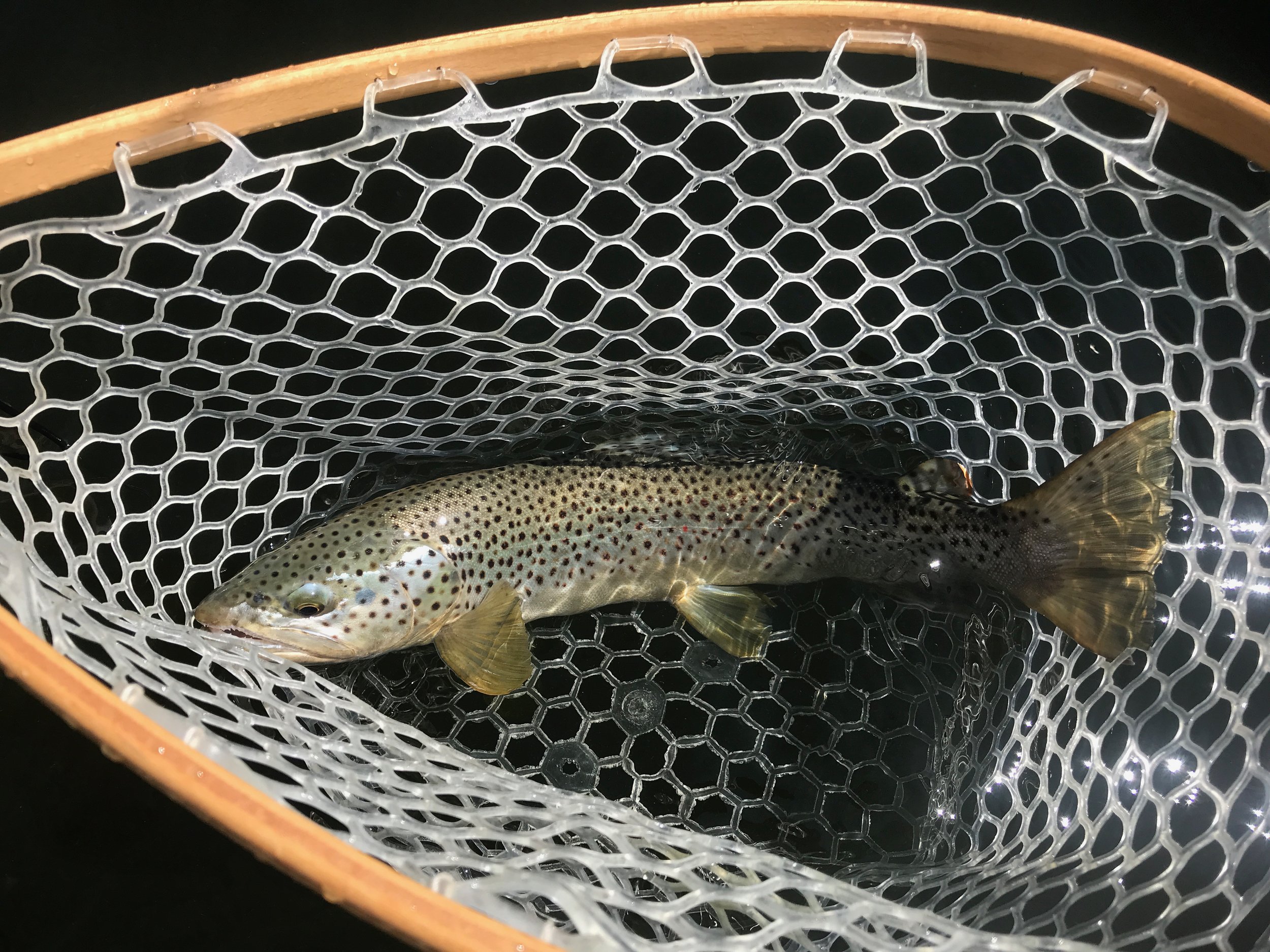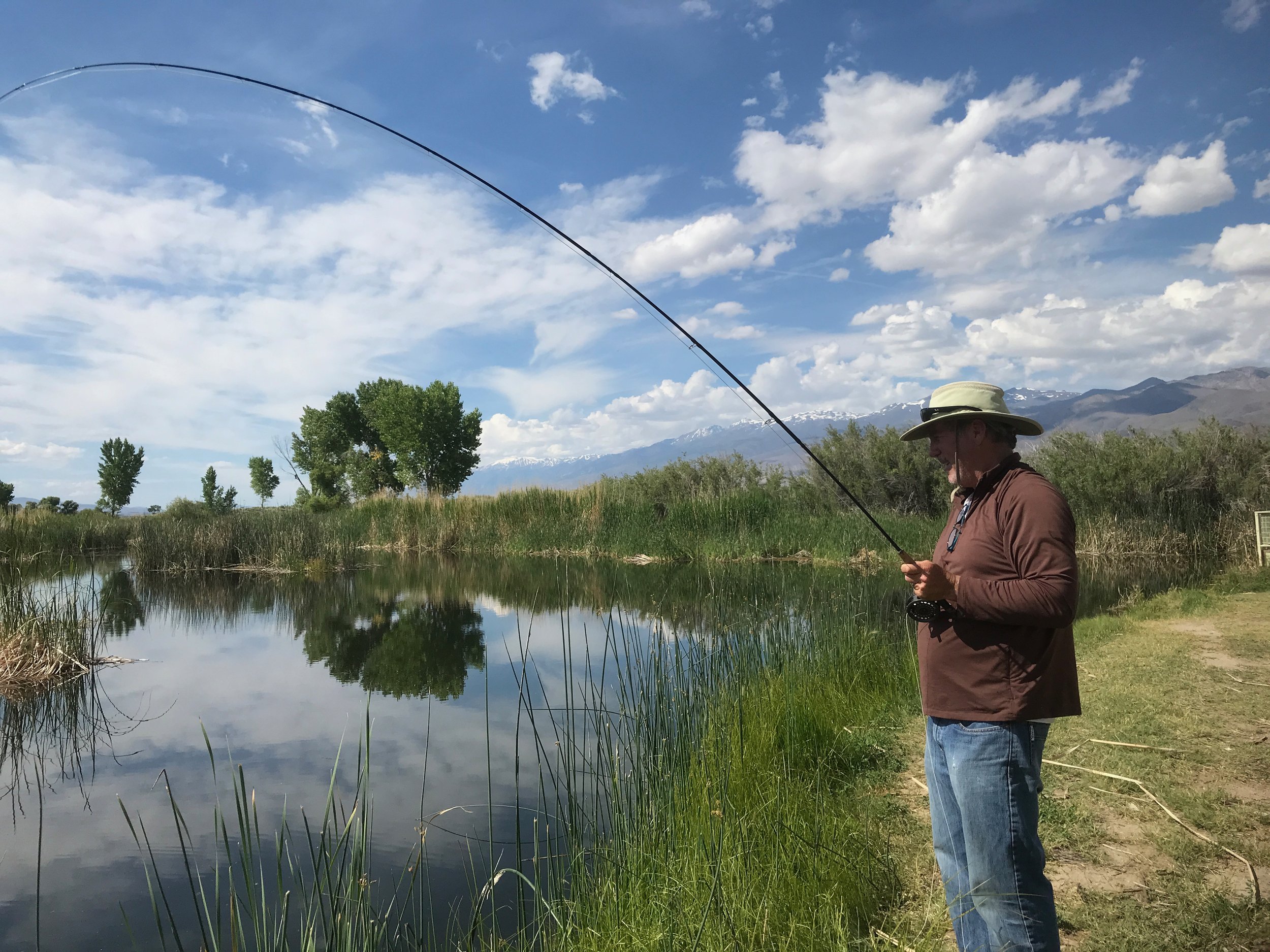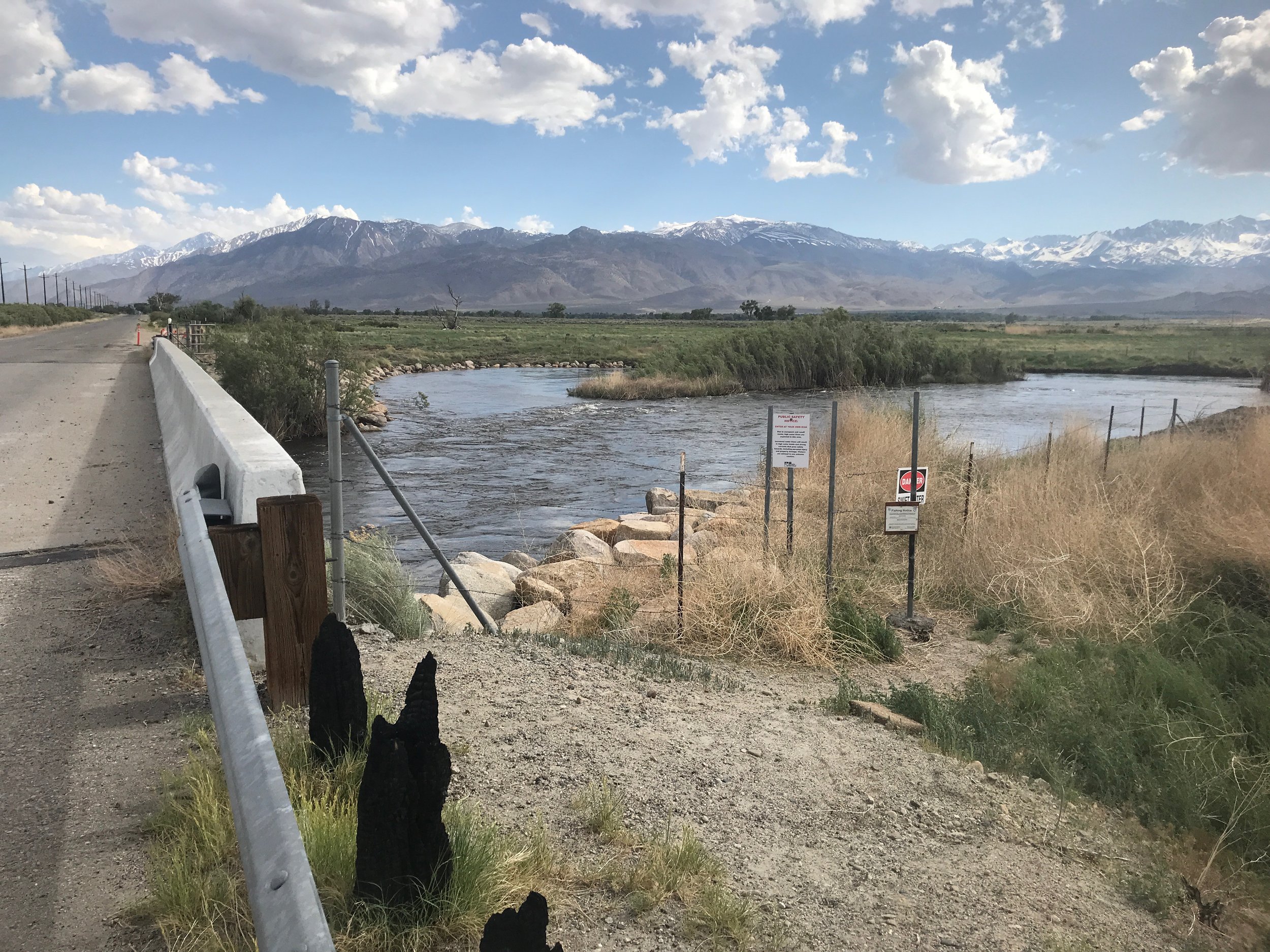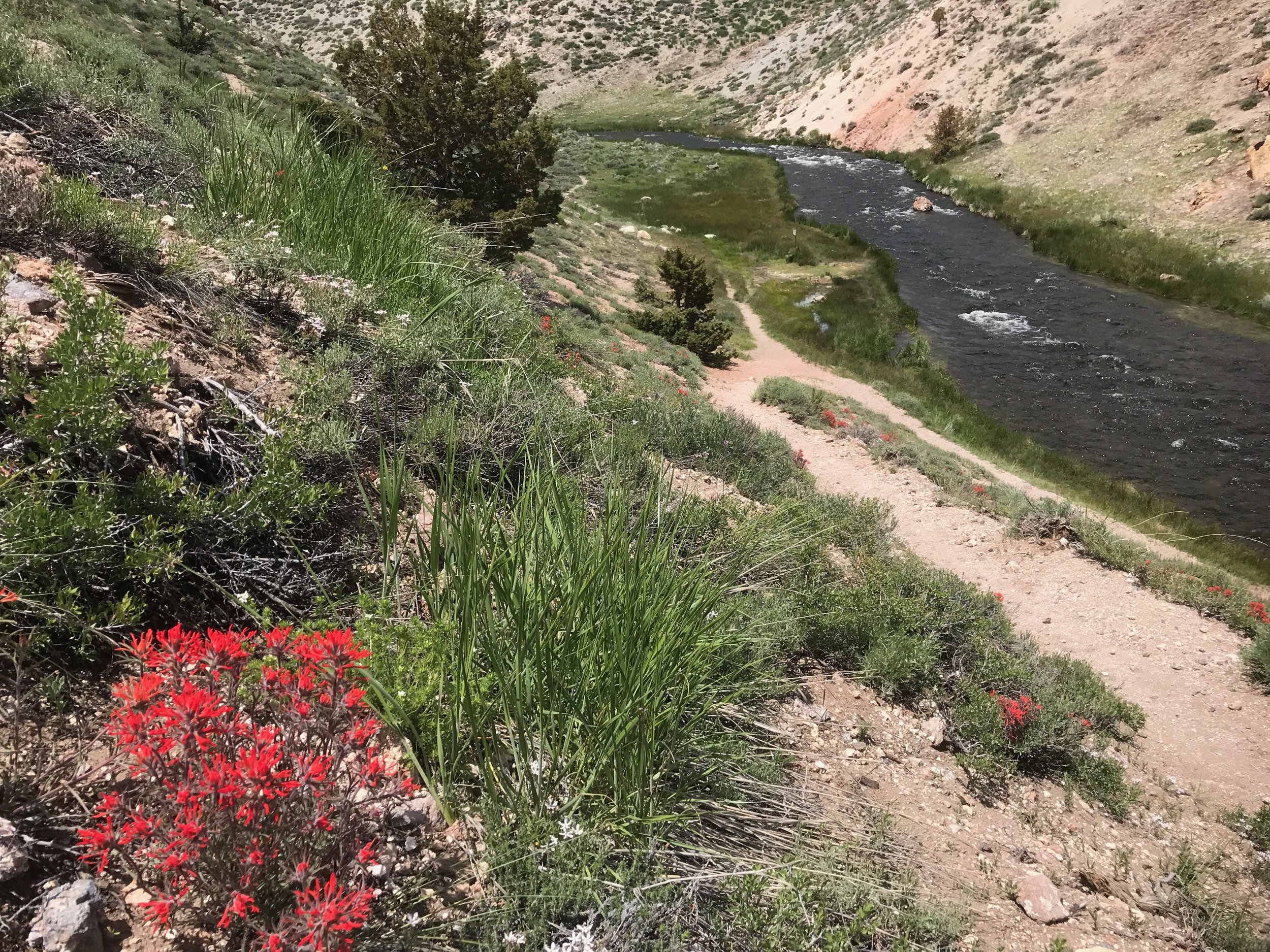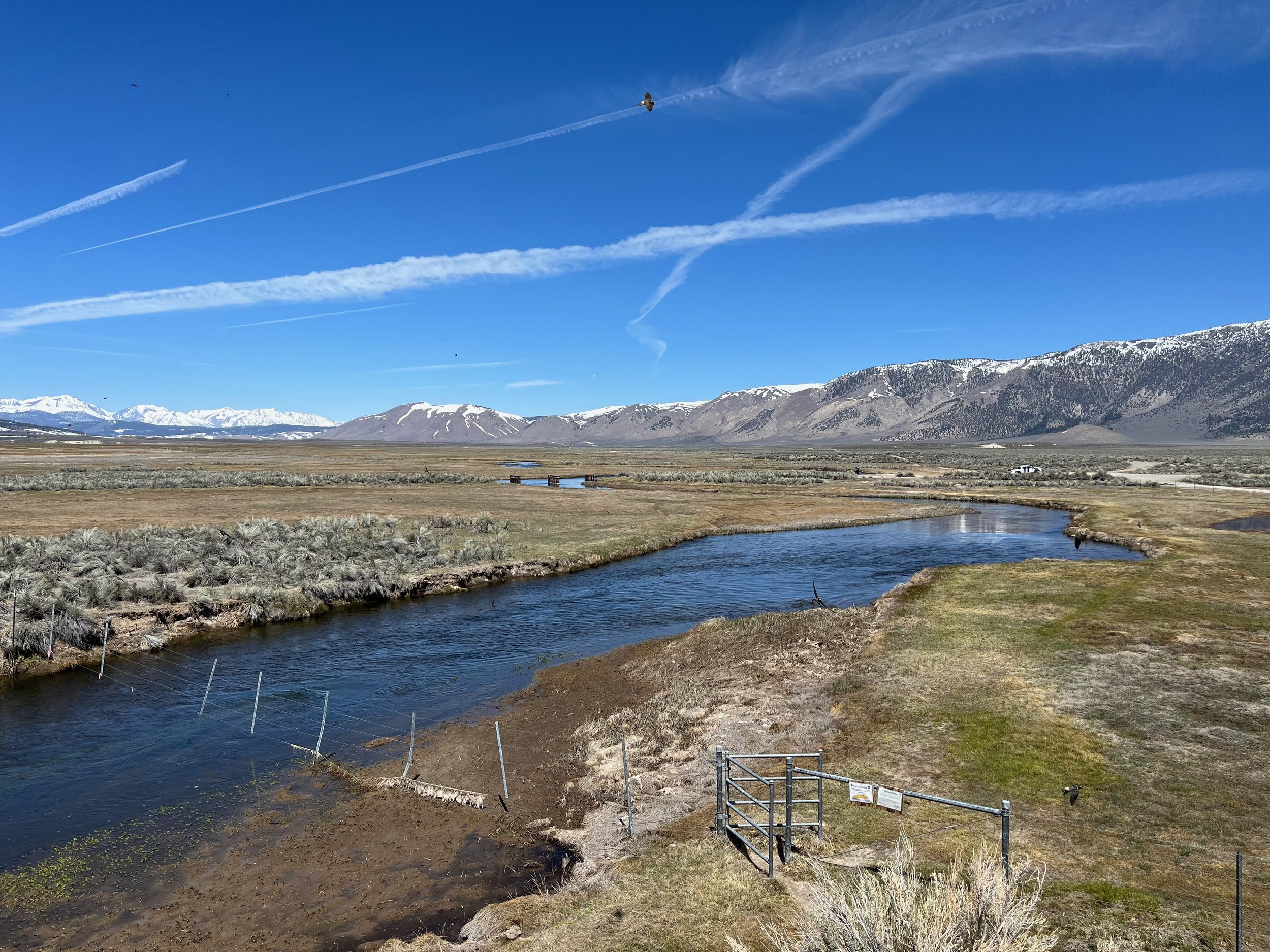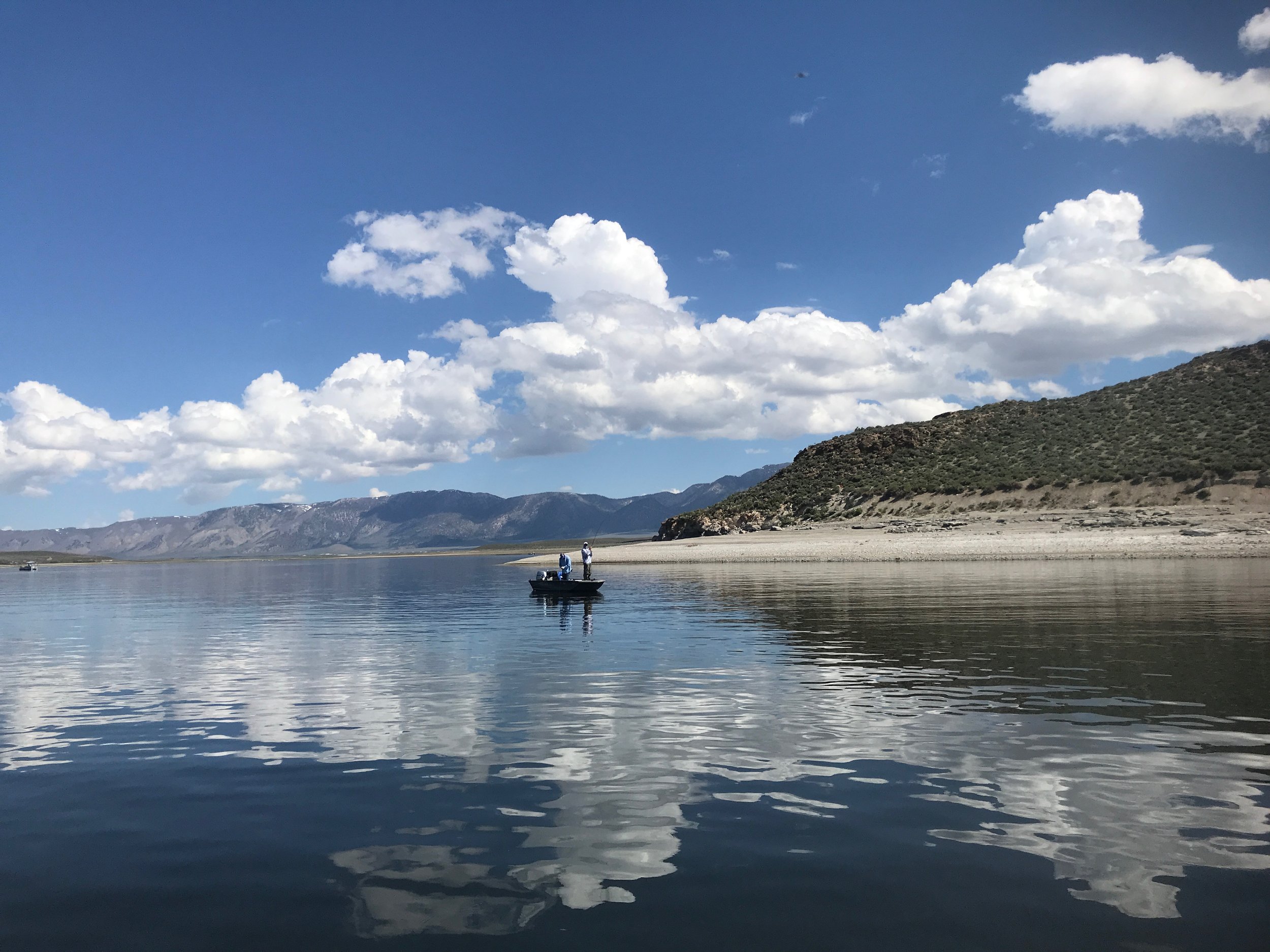A week of afternoon showers in Mono County has made it nice to fish upper elevation waters. I’ve been rained on. Seen lightning. Been hot in the sunshine. Typical Eastern Sierra weather. We have had a little bit of everything. As waters recede and lakes stabilize fly fishing is getting better every day. Mayflies, caddis and midges are hatching. Hoppers are around, but the trout are not seeing them blown onto the water so they are not feeding on them.
Afternoon rain showers has cooled off upper elevation waters like the upper Owens river .
Lower Owens River
Wild Trout Section:
Flows have jumped back up to 400 CFS which is too high to safely wade. Nymphing is the most productive method of fly fishing the lower Owens River right now. I’m fishing the Euro rod right above Five Bridges and finding wild brown trout willing to take olive burlap caddis, hot spot pheasant tail nymphs, stoner nymphs and green/gold Prince nymphs. Access is still closed at Pleasant Valley Campground and at the chalk bluff on Chalk Bluff Road..
Lower Owens River flows are back up to 400 CFS and fly fishers fishing the banks are catching trout on nymphs.
Hot Creek
Interpretive Site:
There are hatches of trico mayflies and caddis which are bringing a few trout to the surface. Action is starting around 8:30 in the morning and lasting to early afternoon. I’ve been doing best Euro nymphing and fishing nymphs under an indicator. Pheasant tail nymphs, gold ribbed hares ears, midges, and olive burlap caddis are fooling wild brown trout. On the surface blue wing olive parachutes, trico parachutes, trico spinners and gray caddis are bring trout to the surface to sip these flies.
With sporadic dry fly activity nymphing on Hot Creek has been the most successful method.
Hot Creek
Canyon Section:
Water levels have receded to the point that fly fishers nymphing in the canyon are catching trout. Euro nymphing has been my preferred method of fly fishing in the canyon. I’m using hot spot pheasant tail nymphs, stoner nymphs, green/gold Prince nymphs, Frenchie’s and olive burlap caddis. Fishing the slower flats below Hot Creek Ranch and behind instream obstacles like weed beds and rocks is producing most of the fish. Dry fly fishing is tough in the canyon with very little surface activity from the trout,
John Cary from Apple Valley is hooked up to wild brown trout that took one of his three nymphs on the Euro rig.
Upper Owens River
Above Benton Crossing Bridge:
The cloud cover and rain has made it pleasant to fish all day on the river. Caddis and mayflies are hatching and the trout are feeding on the emergers as well as the adults. Brown or olive elk hair caddis, blue wing olive parachutes, black ant patterns and beetles are getting hit by the rising trout. Nymphing under an indicator or with the Euro rig is producing five to 14 inch wild brown trout and rainbow trout. Hot spot pheasant tail nymphs, Frenchie’s, olive quilldigons, stoners and green/gold Prince nymphs are producing wild trout.
Float tubing McGee bay with a damsel fly nymph of callibaetis nymph is proving to be a successful method of fly fishing the lake.
Crowley Lake:
Los Angeles Department of Water and Power have filled Crowley Lake to its highest level. With the increased volume of water in the lake the trout have spread out and are harder to find. McGee Bay is known for its abundance of midges. The midges have not repopulated the areas of the lake that were high and dry just a few weeks back. With the lack of midges, fly fishers throwing damsel fly nymphs and callibaetis nymphs are finding a few trout to take their flies. The key to midging is finding areas of the lake that has hatching midges. Tiger midges, zebra midges, gray midges and albino midges continue to produce trout for fly fishers midging in Crowley Lake.
Bishop Creek Canal continues to produce trout for fly fishers nymphing under an indicator or with the Euro rig.
Bishop Creek Canal:
Behind the Old Ford Dealer:
Overnight rain showers have caused the canal to rise and get off color. With the increased flows it’s been tough to get the trout to take flies. I’ve been working the Euro rod with a hot spot pheasant tail nymph, stoner nymph and green/gold Prince nymph. I’ve been working hard to get a few fish. Key to success for me has been to cover lots of water with the nymphs.


